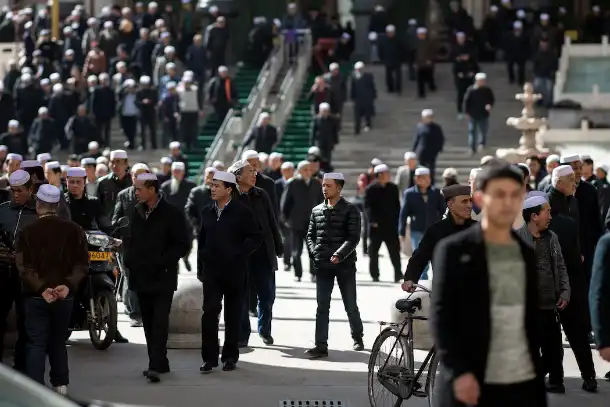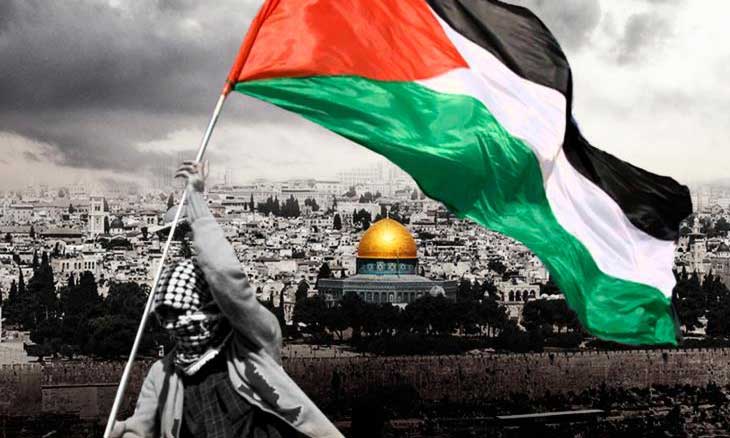Gaza Deal Crowns Palestinian Resilience and Breaks Israeli Arrogance
After two years of genocide,
starvation, and systematic destruction, the Palestinians emerge from the
inferno with a historic agreement that puts an end to one of the harshest wars
of the modern era.
But this agreement is not a favor from
anyone, nor the result of fleeting political pressure it is
the outcome of legendary resilience by a people who chose to live with dignity,
and of a resistance that managed the war with awareness and responsibility
until it imposed its own terms on the occupation.
The Fruit of Steadfastness and Sacrifice
What has been achieved was not born
overnight; it came after two years of steadfastness on both the battlefield and
among the people, during which Palestinians presented the finest examples of
patience and defiance.
Despite massacres, hunger, siege, and
destruction, the will of the Palestinians did not break — it grew stronger and
more determined to hold on to their land, their rights, and their future. From
the womb of this steadfastness, the agreement emerged as a profound political
turning point.
Gaza has proven that resistance is a way
of life for a people who believe that freedom is seized, not granted.
Every home that stood firm, every
mother who bid farewell to her children, and every doctor or volunteer who
continued their work under bombardment all contributed to writing this defining
political moment.
The Failure of the “Israeli” Project
The occupation
entered the war with clear objectives: to eliminate Hamas, disarm
it, impose external control over Gaza, and recover the captives by force.
But the outcomes were entirely the
opposite — the resistance was not defeated, its organizational structure
remained intact, and the captives were not recovered by force, but through an
agreement in which the resistance dictated the rules of the game.
The occupation has failed to achieve
any of its objectives, losing its military and political prestige, while its
international isolation deepened and the rhetoric of “total deterrence” once
boasted of by its leaders collapsed.
It has become clear that Netanyahu
waged the longest war in the history of “Israel,” only to emerge from it with
the weakest political and military outcome of his career.
The Essence and Implications of the Gaza
Agreement
The terms of the agreement are built
upon five key pillars that represent the core demands of the resistance and the
Palestinian people:
1.
A
comprehensive ceasefire and an end to aggression across all areas of the Gaza
Strip.
2.
The
withdrawal of occupation forces from populated areas in the north and south,
paving the way for a full withdrawal.
3.
The
return of displaced persons to their homes and lands without restrictions or
conditions.
4.
The
entry of humanitarian aid and the launch of the reconstruction process under
international supervision and guarantees.
5.
The
implementation of a prisoner exchange deal that includes those serving life
sentences, long-term detainees, and prisoners from Gaza.
These terms are not mere negotiating
details; they represent an acknowledgment of the failure of the aggression’s
objectives and a redefinition of the deterrence equation governing the
relationship between the resistance and the occupation.
The Political Dimension of the Gaza
Agreement
Politically, the agreement marks a
turning point in international awareness regarding Gaza and the resistance.
After two years of attempts to
demonize the resistance and strip it of legitimacy, major powers were
ultimately compelled to recognize it as an indispensable actor in any future
arrangements.
It also restores the centrality of the
Palestinian national dimension in confronting international administration and
foreign guardianship projects promoted in recent months.
On the other hand, the agreement
exposes the fragility of the “Israeli” political structure.
Netanyahu, who vowed to eliminate Hamas,
found himself signing an agreement that grants it unprecedented field and
political legitimacy, cementing the failure of his policies before both the
“Israeli” and global public.
The “Israeli” Interpretation of the Gaza
Agreement
Hebrew analyses published following
the signing of the agreement reveal the extent of confusion within “Tel Aviv.”
In a report by military analyst Avi
Issacharoff in Yedioth Ahronoth, it was acknowledged that Netanyahu’s
government succeeded in securing the release of all living captives and some
bodies without a full withdrawal from Gaza. However, in return, it granted Hamas
unprecedented political gains.
He added that the movement secured a
comprehensive ceasefire backed by international guarantees that “Israel” would
find difficult to violate, along with broad international recognition it had
never received before — while “Israel” itself has fallen into a suffocating
political isolation as a result of its government’s failed policies.
He also noted that the major U.S.
shift embodied in President Donald Trump’s decision
to impose an end to the war on Netanyahu came after the “Israeli” airstrike targeting Hamas
leaders in Qatar, which angered Washington as it was seen as an attack on a
strategic ally.
Issacharoff concludes by saying that Hamas
will not give up its weapons neither now nor in the near future except
after the establishment of a Palestinian state, and that the “complete victory”
promised by Netanyahu has remained nothing more than an empty slogan.
This “Israeli” testimony reflects a
rare acknowledgment of the occupation’s failure to achieve its objectives and of
the triumph of the Palestinian will in the battle for survival and awareness.
The Resistance and the Management of the
Battle with Awareness and Responsibility
Throughout the war and in its
aftermath, the resistance demonstrated that it manages both the battlefield and
politics with a balanced strategic mindset
combining military firmness with political flexibility.
It engaged with regional mediators
(Egypt, Qatar, and Turkey) in a responsible manner, without compromising on its
principles, always prioritizing the interests of its people over tactical
calculations.
The resistance approached negotiations
with the spirit of leadership rather than reaction, successfully transforming
immense sacrifices into tangible political gains.
Its management of this battle
solidified its position as a unifying national actor rather than a besieged
local faction, proving that its project is not limited to the battlefield but
grounded in a mature political vision capable of negotiating from a position of
strength.
The Popular and Media Dimension of the
Gaza Agreement
The agreement does not belong to the
resistance alone; it is the fruit of an entire people who endured two years in
hell without breaking.
Therefore, media coverage of the
agreement should reflect the spirit of conscious victory not
fleeting celebration.
The Regional and International
Implications of the Gaza Agreement
The repercussions of the agreement
will not be limited to Gaza alone; they extend to the entire region and the
world.
The experience has proven that
normalization with the occupation has brought neither security nor stability,
and that the Arab peoples still view Palestine as their moral and political
compass.
Internationally, the failure of the
war and its atrocities have forced global public opinion to reconsider its
stance toward “Israel,” deepening its isolation and exposing the falsehood of
its so-called democratic narrative.
Moreover, the U.S. shift in imposing
the truce indicates that the United States has begun to view Gaza as a
political reality that cannot be ignored — and that regional security is now
tied to ending the occupation rather than expanding the circles of war.
The Gaza Agreement: A Phase, Not an End
The agreement should not be viewed as
the end of the conflict, but rather as the beginning of a new phase in the
national and political struggle.
It is a milestone on a long road
toward liberation one that requires awareness, organization, and
genuine Palestinian unity to build upon this achievement rather than squander
it.
What has been achieved in Gaza is not
merely a truce, but a victory of the Palestinian human spirit over the
machinery of extermination and a shattering of the arrogance of an
occupation that believed it could subdue a people through genocide and
starvation.
The experience has proven that true
power lies not only in weapons, but in faith, awareness, and unity.
And now Gaza, after two years of fire,
raises its head to tell the world:
What could not be taken by blood cannot be imposed by siege, and what could not
be broken in war will not be defeated at the negotiating table.
__________________________________________________
You may also like:
Is There Peace? 720 Days Without the Day After
Two Years After “Al-Aqsa Flood”... Gains and Losses
Two Years After “Al-Aqsa Flood”: Netanyahu’s Political Folly vs. Hamas’ Tactical Success










